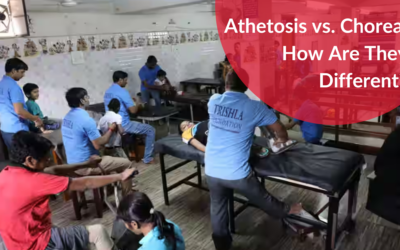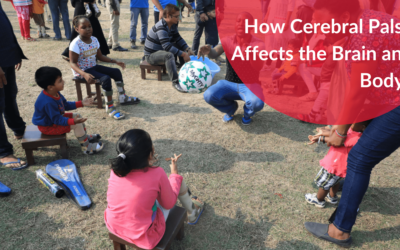Understanding Travelling with Cerebral Palsy
Traveling with cerebral palsy (CP) involves additional considerations to ensure that the journey is as smooth and enjoyable as possible. By breaking down the travel process into detailed steps, children with CP and their families can better prepare for their trips, addressing accessibility concerns, medical needs, and logistical challenges.
Planning Before Travelling with Cerebral Palsy
1. Research Your Travelling Destination Thoroughly
Choosing a destination that caters to the needs of someone with CP is crucial. Look for destinations with a strong reputation for accessibility, including hotels, tourist attractions, and public transportation systems that accommodate wheelchairs and other mobility aids. Websites and forums dedicated to accessible travel can offer insights and reviews from other travelers with similar needs.
2. Consult with Healthcare Providers
Before traveling with Cerebral Palsy, a check-up can help assess the traveler’s health status and any medical considerations that must be addressed. Healthcare providers can advise on managing health during travel, adjusting medication schedules across different time zones, and preparing for emergencies. They can also provide a letter outlining the medical condition and needs, which can be helpful in various travel situations.
3. Prepare a Medical Kit
The medical kit should include:
- Routine medications and supplies.
- Prescriptions.
- Over-the-counter remedies for common travel ailments.
- Any specialized medical equipment.
It’s also wise to include a medical alert bracelet or card that explains the individual’s condition, necessary precautions, and emergency contact information.
4. Verify Accessibility Features
Direct communication with accommodations is essential to confirm specific accessibility features. This includes ensuring a barrier-free approach to enter the room, that doorways are wide enough for a wheelchair, and that the bathroom has grabbed bars and a roll-in shower if needed.
5. Consider Proximity to Attractions
Staying close to major attractions or along accessible public transportation routes can significantly reduce the effort and time required to participate in activities. This strategic planning can help conserve energy to enjoy the destination rather than navigate it.
6. Select Appropriate Transportation
Air Travel
Early notification to the airline can facilitate services like wheelchair assistance, early boarding, and seating arrangements that accommodate mobility needs. Also, inquire about the airline’s policies regarding the transport of mobility aids.
Ground Transportation
For those renting vehicles, some companies offer adapted cars. When using taxis or ride-shares, specific services cater to individuals with mobility challenges.
7. Plan for Mobility Aids
It’s essential for travelers who use mobility aids to ensure they are travel-friendly. This might mean using a collapsible wheelchair or ensuring electric scooters have batteries compliant with airline regulations. Always tag and label mobility aids with contact information in case they are misplaced.
During Travelling with Cerebral Palsy
8. Follow a Flexible Itinerary
A flexible itinerary that allows for rest days and spontaneous adjustments can make travel more enjoyable and less stressful. Listening to the travelers’ needs and adapting plans are essential.
9. Stay Hydrated and Nourished
Regular meals and hydration are vital to maintaining energy levels, especially during travel when routines are disrupted. Packing healthy snacks and water for outings can prevent low energy and irritability.
10. Seek Out Assistance
Traveling with Cerebral Palsy often requires assistance navigating an airport or exploring a new city. Encourage reaching out for help when needed and accept the aid offered by service staff or fellow travelers.
11. Reflect on the Experience
After returning home, take the time to reflect on what aspects of the trip went well and what could be improved for future travel. Consider writing a review or sharing experiences with online communities to help others planning similar trips.
12. Secure Travel Insurance
Obtaining comprehensive travel insurance that covers medical needs and the potential replacement of specialized equipment is critical. Ensure the policy includes coverage for pre-existing conditions and accessible accommodations in emergencies.
13. Create a Communication Plan
For individuals with communication challenges, consider preparing a travel communication board or digital aids that include key phrases, medical information, and personal needs in the destination country’s language. An emergency contact list, including local emergency services and the nearest embassy or consulate, is also advisable.
14. Pack Smart
Beyond the essentials, packing should include items that make travel more comfortable and accessible. Consider bringing along seat cushions, portable ramps, or specialized utensils that can make accommodations and dining out more manageable.
15. Leverage Technology
Use smartphone apps and devices to facilitate travel. Navigation apps can help find the best routes and accessible options. Translation apps can also be invaluable in non-English speaking countries.
16. Advocate for Needs
Don’t hesitate to advocate for your or your loved one’s needs while traveling with Cerebral Palsy. This may involve requesting priority service, specific seating arrangements, or immediate access to accommodations upon arrival.
17. Engage with Local Communities
Engaging with local disability communities or organizations can provide additional support and resources during your stay. They can offer insights into navigating the area and accessible attractions and possibly give a sense of community while away from home.
18. Be Prepared for the Unexpected
Traveling with cerebral palsy often involves unforeseen challenges. Having a flexible mindset and backup plans can alleviate stress. This might include having a list of accessible accommodations and transportation options beyond the initial bookings.
Post-Travel Reflection
19. Share Your Experience
After the trip, sharing your experiences, both positive and negative, can be incredibly valuable to others in the CP community. Consider writing a blog post, participating in forums, or contributing reviews to platforms focused on accessible travel.
20. Evaluate Medical Equipment and Aids
Post-travel, assessing any wear and tear on assisted walking devices or medical equipment is vital. This can help ensure everything is in good working order and plan for repairs or replacements well before any future trips.
21. Celebrate Successes
Every successful travel experience, no matter how small, is a milestone worth celebrating. It builds confidence and resilience, not just for the traveler with CP but also for their family and caregivers.
22. Learn and Grow from the Experience
Each trip can be a learning experience, offering insights into managing travel more effectively in the future. Reflect on what worked well and what could be improved, and consider how different strategies could enhance future travel experiences. Traveling with cerebral palsy certainly requires more preparation, but with the proper planning and resources, it can be a rewarding experience. Trishla Foundation is committed to supporting individuals with CP and their families in all aspects of life, including travel. By sharing these detailed tips, we hope to empower our community to explore the world with confidence and ease.




